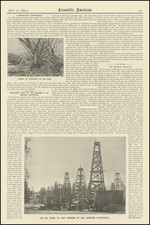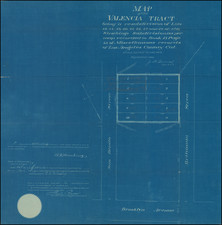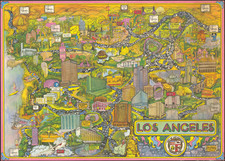This meticulously detailed 1909 map, produced by the United States Coast and Geodetic Survey, illustrates San Pedro Harbor in California. The map provides an intricate depiction of the harbor’s layout, depth soundings, navigational aids, and surrounding geographic features, reflecting the survey's commitment to precision and accuracy.
The map clearly outlines the harbor area, including the town of San Pedro. The grid layout of the streets within the town is prominently displayed, indicating the developed urban area adjacent to the harbor.
Depth measurements are extensively noted throughout the harbor and surrounding waters. These soundings, indicated in feet, provide crucial information for navigational purposes, highlighting the varying depths and underwater topography.
Various buoys and markers are depicted with specific symbols and abbreviations. The map includes a key for these signs and abbreviations, such as:
- Red and black buoys, starboard and port markers
- Channel buoys with black and white perpendicular stripes
- Danger buoys with black and red horizontal stripes
- A compass rose is prominently featured, aiding in the orientation and navigation within the harbor.
The surrounding landscape, including coastal features and elevations, is meticulously rendered. Contour lines, showing successive differences of 20 feet, depict the topography of the area. The wetlands and other natural features are illustrated with hatch marks and detailed drawings, providing a comprehensive understanding of the region’s geography.
The map includes information on the tides at San Pedro, noting the mean times of high and low water, and the mean heights above the plane of reference. This data is essential for mariners to predict water levels and navigate safely. Elevation data is referenced to high water and expressed in feet, with contour lines showing significant changes in elevation.
The map details the characteristics of navigational lights and signals, such as the light at Point Fermin. Information provided includes the light's fixed, flashing, or revolving nature, color, height above sea level, visibility range in nautical miles, and fog signals.
In the early 20th century, San Pedro Harbor was a critical point of entry and commerce on the West Coast of the United States. This map would have been an invaluable resource for sailors, providing detailed navigational information essential for safe passage and docking. The precision of the United States Coast and Geodetic Survey's work ensured that mariners had reliable data to guide them through the bustling and strategically significant harbor.
The map was first issued in about 1907 and periodically updated.










![[Hollywood / Los Angeles] Castle's Inc. Hollywood's Complete Camera Store](https://storage.googleapis.com/raremaps/img/small/73017.jpg)
![(Los Angeles) [Composite of Nine U.S. Geological Survey Topo Sheets Covering Southwest Los Angeles County.]](https://storage.googleapis.com/raremaps/img/small/104442.jpg)


